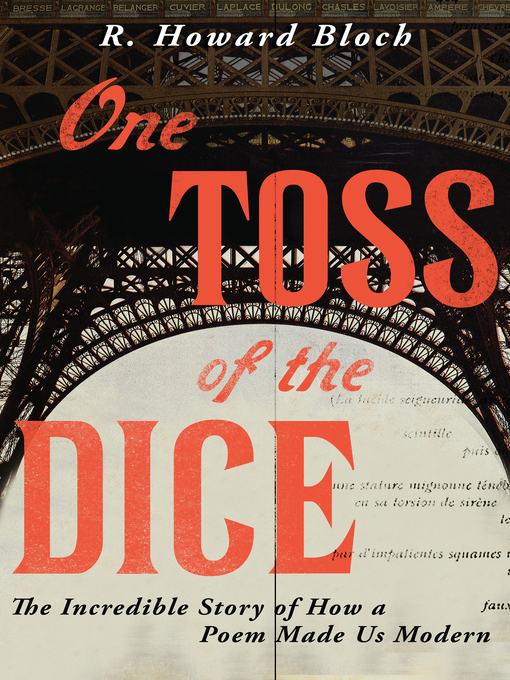In the tradition of The Swerve comes this thrilling, detective-like work of literary history that reveals how a poem created the world we live in today.
It was, improbably, the forerunner of our digital age: a French poem about a shipwreck published in 1897 that, with its mind-bending possibilities of being read up and down, backward and forward, even sideways, launched modernism. Stéphane Mallarmé's "One Toss of the Dice," a daring, twenty-page epic of ruin and recovery, provided an epochal "tipping point," defining the spirit of the age and anticipating radical thinkers of the twentieth century, from Albert Einstein to T. S. Eliot.
Celebrating its intrinsic influence on our culture, renowned scholar R. Howard Bloch masterfully decodes the poem still considered among the most enigmatic ever written. In Bloch's shimmering portrait of Belle Époque Paris, Mallarmé stands as the spiritual giant of the era, gathering around him every Tuesday a luminous cast of characters including Émile Zola, Victor Hugo, Claude Monet, André Gide, Claude Debussy, Oscar Wilde, and even the future French prime minister Georges Clemenceau. A simple schoolteacher whose salons and prodigious literary talent won him the adoration of Paris's elite, Mallarmé achieved the reputation of France's greatest living poet. He was so beloved that mourners crowded along the Seine for his funeral in 1898, many refusing to depart until late into the night, leaving Auguste Renoir to ponder, "How long will it take for nature to make another such a mind?"
Over a century later, the allure of Mallarmé's linguistic feat continues to ignite the imaginations of the world's greatest thinkers. Featuring a new, authoritative translation of the French poem by J. D. McClatchy, One Toss of the Dice reveals how a literary masterpiece launched the modernist movement, contributed to the rise of pop art, influenced modern Web design, and shaped the perceptual world we now inhabit. And as Alex Ross remarks in The New Yorker, "If you can crack [Mallarmé's] poems, it seems, you can crack the riddles of existence." In One Toss of the Dice, Bloch finally, and brilliantly, dissects one of literary history's greatest mysteries to reveal how a poem made us modern.




